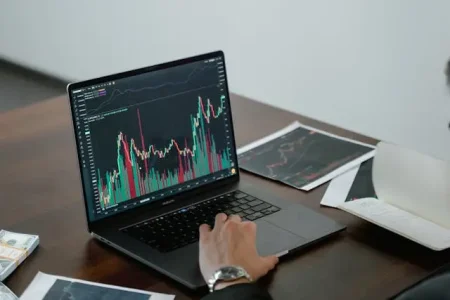Candlestick charts are an essential tool for traders in the Forex market. These charts not only provide a visual representation of the price movements within a specific time frame but also help traders make informed decisions by illustrating market dynamics clearly. This blog will delve into what candlesticks are, their components, and how they can be interpreted to gauge market sentiment.
What is a Candlestick?
A candlestick is a type of chart used in financial trading that displays the open, high, low, and close prices (OHLC) for a specific period. Each candlestick visually represents the price activity of an asset during a given timeframe, making it easier for traders to observe potential trends or reversals in the market.
Components of a Candlestick
- Real Body: The thick part of the candlestick shows the range between the opening and closing prices. A candlestick is considered bullish if the closing price is above the opening price, typically colored in white or green, indicating a rise in the market during that period. Conversely, a bearish candlestick occurs when the closing price is below the opening, usually displayed in black or red, signaling a decline.
- Shadows: Also known as wicks, these are the thin lines that extend above and below the real body. The upper shadow represents the session’s high, while the lower shadow shows the session’s low.
Color Flexibility
While traditional candlesticks use white and black to represent bullish and bearish movements, respectively, modern trading platforms offer customizable color settings for these candlesticks, enhancing visual clarity for traders.
Candlestick Body Sizes and Their Market Implications
The size of a candlestick’s body can tell traders a lot about market sentiment:
- Long Bodies: Indicate strong buying or selling activity. A long bullish body signifies strong buying pressure, while a long bearish body shows significant selling pressure.
- Short Bodies: Suggest limited price movement and indicate indecision or balanced activity between buyers and sellers.
Interpreting Candlestick Shadows
Shadows on candlesticks provide insights into the trading session’s price extremes:
- Upper Shadows: Point to the highest price reached during the session; longer upper shadows can indicate that buyers lost control to sellers by the end of the session.
- Lower Shadows: Reflect the lowest price; longer lower shadows may suggest that sellers lost control to buyers, pushing the prices up from the lows.
Shadow Lengths and Their Meanings
- Long Shadows: Suggest a volatile session with significant price excursions beyond the open and close.
- Short Shadows: Indicate that most trading occurred near the open and close prices, suggesting less volatility.
Conclusion
Candlestick charts are a powerful visual tool in Forex trading, offering deep insights into market psychology and potential price movements. By understanding the components and implications of different candlestick formations, traders can enhance their ability to make strategic trading decisions based on observed market behaviors.
At Twisted Forex, we provide comprehensive Forex trading education and resources to help you master candlestick charting and other essential trading techniques. For more information and detailed guides, visit our educational section and take your trading skills to the next level. Happy trading!
ics.



